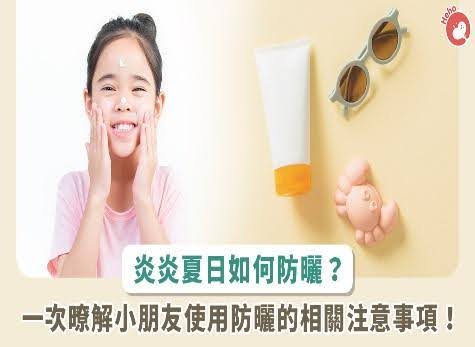The scorching summer is approaching, and to prevent UV damage to the skin and reduce the risk of skin cancer, sun protection becomes very important! Dermatologists remind us that the skin has a memory for UV damage, and each sunburn could potentially lead to cancer. Therefore, preventing sunburn and tanning is crucial!
Children's skin is thinner and more susceptible to UV damage. During this changeable spring and summer season, parents should learn about the importance of sun protection, learn sun protection techniques, and dispel myths about sun protection along with their children and teenagers.
https://news.immigration.gov.tw/NewsSection/Detail/B98D1B6C-9FD5-401D-9D02-FC6CE6441C61?lang=TW
https://news.immigration.gov.tw/NewsSection/Detail/079E8112-4D71-4458-83CB-9D4062BBAECD?lang=TW
Some people ask if getting more sun exposure helps the body synthesize vitamin D, and if using sunscreen prevents this. Dermatologist Zhou Wanyi states that the best time for sun exposure to synthesize vitamin D is between 10 AM and 3 PM, as morning and evening sunlight is less effective.
https://news.immigration.gov.tw/NewsSection/Detail/B98D1B6C-9FD5-401D-9D02-FC6CE6441C61?lang=TW

The choice of sunscreen is very important. Image provided by pxhere
Exposing the face, arms, and palms to the sun for 10 to 15 minutes is sufficient to get enough vitamin D. There is no need to avoid sunscreen all day to absorb vitamin D. Sunscreen is necessary because UV rays not only cause redness, sunburn, and tanning but also aging, and over time, can lead to skin cancer.
At what age can infants use sunscreen? The American Academy of Dermatology and the American Academy of Pediatrics both recommend that infants older than 6 months can start using sunscreen products. This is because the skin-to-weight ratio of infants is higher than that of adults, and their skin barrier is not fully developed, making them more likely to absorb substances applied to the skin.
Can children use the same sunscreen as adults? Zhou Wanyi mentioned that not all sunscreens suitable for adults are appropriate for children. It is recommended that children under 2 years old use physical sunscreens (main ingredients being zinc oxide and titanium dioxide), which are less likely to irritate the skin and are less easily absorbed, making them safer to use.

The choice of sunscreen is very important. Image provided by pxhere
Currently, the Taiwan Society of Pediatric Dermatology offers the following sun protection recommendations for children:
- All ages: Use shade (umbrellas, hats) or wear sun-protective clothing with UPF≥50, masks, or sleeves.
- Under 6 months: Avoid sun exposure primarily, and do not use any sunscreen products.
- Children over 6 months: Avoid sun exposure and choose broad-spectrum sunscreens with SPF≥
Zhou Wanyi reminds us that many people think sunscreen is unnecessary on cloudy days, but UV rays penetrate clouds and still damage the skin, so sun protection is needed even on cloudy days. Sunscreen should be applied to all exposed areas, especially the nose, behind the ears, shoulders, and tops of the feet.
If you are outdoors for extended periods, reapplying sunscreen is crucial! Zhou suggests reapplying at least every 2 hours. Should you remove sunscreen? Generally, regular facial cleansers and body washes can clean sunscreen effectively, but if it's tinted or waterproof, be sure to remove it before washing.







